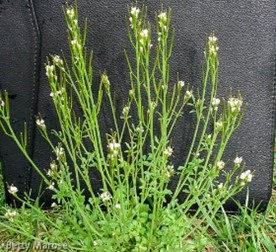The Weeds are Here!
- M.J. Design
- Apr 27, 2022
- 2 min read
Well spring has finally arrived (for the most part). The birds are chirping, critters and insects are coming out of hibernation and the spring bulbs are popping and adding some much-needed color and interest to our landscapes. With rising temperatures, our landscapes are slowly resurging. However, with this resurgence comes the awakening of another sort. One that can be quite a hinderance on the beauty and splendor that we have been waiting for so patiently. That’s right…WEEDS!!!
A weed, by definition, is a wild plant that is growing where it is not wanted and tends to be in competition with cultivated plants. As with cultivated plants, weeds have just as many types of life cycles. They can fit in any one of these categories: annual, perennial or biennial. Weed growth and timing is also based on whether they propagate in the cool or warm season.
Cool-season weeds pictured: (L to R) chickweed, bittercress, and henbit
Warm-season weeds pictured: (L to R)
Canadian-thistle, creeping Charlie, and crabgrass
It is important to understand what type of weed you are dealing with in order to manage the control and spread of that particular type of weed. Does it have a shallow root system or is it a tap root? Does it propagate through seed, the root system, or both?
It is not always an easy task to control weeds especially if you are averse to using chemical products. We prefer to use chemicals as little as possible. However, they are necessary when dealing with large areas of growth and/or when dealing with plants that have tap roots. If not fully removed these tap roots will create more off shoots of that weed—and systemic herbicides work best in these cases!
If you don’t like the idea of using chemicals, there are organic types of weed control that can be used such as horticultural vinegar or vinegar solutions mixed with salt and soap as a sticking agent. Although in my experience, they are typically not as effective. They are not a systemic solution and tend to only burn the foliage, so more product and frequent applications are necessary. As with chemical herbicides, applying these methods in the right conditions are a major key for success. The temperature should be above 60 degrees and are most effective when applied in areas that receive more sunlight.
There are numerous resources and ID apps to help you recognize the type of weeds that you are dealing in your landscape. And you’re always welcome to reach out to us here at M.J. Design Associates if you would like assistance or have questions.
Evaluate Your Landscape for healthy growth!
We'll help plan the right new plants in the right growing environments to fit your property.

















Comments